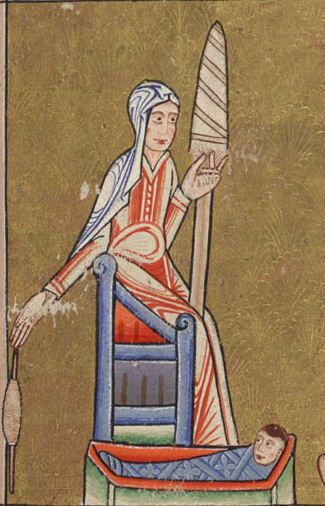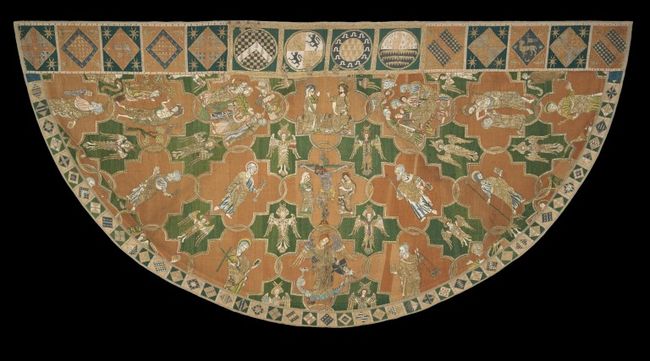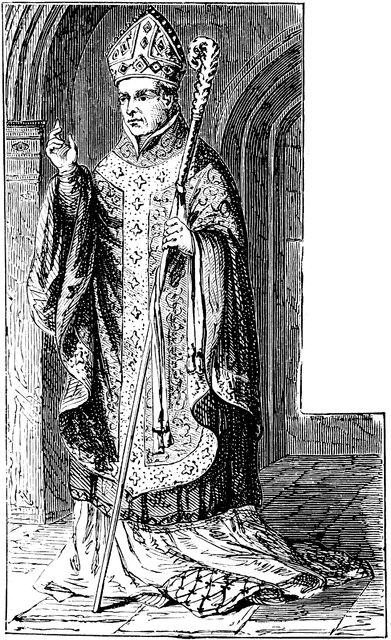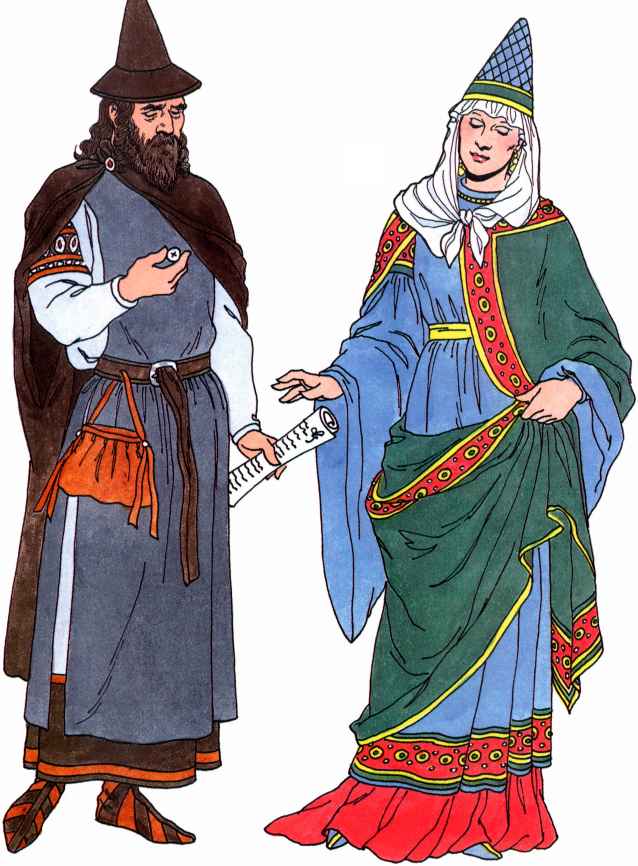公元1000 - 1450年
教士与人民
中世纪的时尚,奢华服饰只有可能提供给少数人,包括贵族,商人和神职人员。
普通平民 -- 农民和自由身人,匠人,贸易人或者职业人事 -- 都穿着可以方便工作的简单样式。
他们的服饰更短更平淡更粗糙,通常来自家庭面料作坊。
服装例如围裙能够折叠成工具,方便携带物品或者提供保护。
劳动者脱到只剩凉爽的亚麻内衣,为了繁重的田地工作。
有学士与职业的男子穿着标志他们受到教育的长袍。
尽管宗教服饰保持了旧时期长袍风格,但教会用最优质的面料伴以精美刺绣和编织技术,来装饰红衣教主和主教们,同样以此装饰祭坛。
服装染色
在中世纪平民的确也穿着有色彩的服装,但由于亚麻染色困难,所以常常被制成浅灰色或者漂白色。
深色羊可以提供深色羊毛,淡色羊毛可以染色。
常见的植物染剂可以制作棕色,黄色(金黄色)以及蓝色(靛蓝)。
在当时红色与紫色制作难度和成本都高昂,这问题一直留到十五世纪经专业人士才解决。
教会纺织
极少的中世纪服饰依旧存在。
在这些幸存品中,大多数是特地为教会制作的高品质miters主教帽子,chasubles外衣以及copes半圆披肩。
英格兰教会刺绣成为著名的Opus Anglicanum英国国教作品。
它是当时最好的,并且引爆整个欧洲。
其中一个极好的例子是一1300年到1320年之间的Syon Cope斗篷。
稀有金属线与丝线线迹共同勾绘出圣经故事,就像可穿着的启示录。
1000 - 1450
PRIESTS AND THE PEOPLE
In the Middle Ages fashionable, luxurious dress was only possible for the wealthy minority, including nobility, merchants, and clergy.
Ordinary people-- peasants and freeholders, artisans and trade workers, or professionals -- wore simpler versions that allowed them to do their work.
Their clothes were shorter or plainer, in coarser, often home-produced, fabrics.
Garments such as aprons could double as tools, to carry items or as protection.
Laborers stripped to cool linen underclothes for heavy field work.
Learned and professional men wore long robes that marked their education.
Although religious clothing kept to older tunic styles, the Church used the best-quality fabrics with the finest embroidery and weaving to dress cardinals and bishops, as well as to adorn altars.
DYEING CLOTH
Ordinary people did wear colored clothes in the Middle Ages, but linen was hard to dye and was used in its natural pale gray or bleached white.
Dark sheep gave dark wool, while paler fleeces could be dyed.
Common plant dyes made browns, yellows (weld, goldenrod), AND BLUES (woad, indigo).
Reds and purples were difficult and costly to produce, left to professionals like the 15th-century dyers above.
CHURCH TEXTILES
Few pieces of medieval clothing are still in existence.
Of those that survive, most are exceptionally high-quality miters (bishop's hats), chasubles (vestments), and copes (semicircular capes) made for the Church.
English church embroidery became famous as opus anglicanum (English work).
It was the finest of its day and exported all over Europe.
An exquisite example of this is the Syon Cope, made between 1300 and 1320.
Precious metal threads mix with silk stitches to illustrate biblical stories, like a wearable illumination.
-- << THE DEFINITIVE HISTORY OF COSTUME AND STYLE>>





